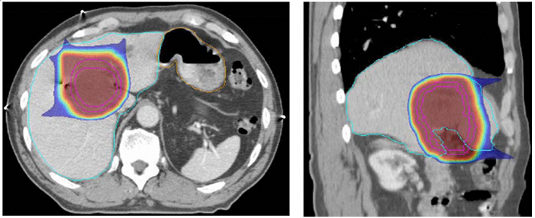Profile of the Proton and Radiation Therapy Center
The Proton and Radiation Therapy Center at Chang Gung Memorial Hospital is Taiwan's first proton therapy center, marking a significant milestone in the advancement of cancer treatment in the country. The center is supported by a team of 20 attending physicians, many of whom are also medical and academic research teachers and professors. Each physician has specialized expertise in treating various types of cancers, including central nervous system tumors, head and neck cancers, lung cancer, breast cancer, esophageal cancer, liver and pancreatic cancers, genitourinary tract cancers, pediatric cancers, soft tissue cancers, gynecologic cancers, colorectal cancers, skin cancers, and hematologic and lymphatic malignancies.
The center actively participates in clinical
trials and research projects, contributing to advancements in proton therapy
and radiation oncology. Collaborative efforts with international institutions
further enhance the development of innovative cancer treatments, reinforcing
its role as a leader in the field.
As a LEED-certified (Leadership in Energy and Environmental Design) green building, the Proton and Radiation Therapy Center offers an eco-friendly and patient-centered medical environment. Equipped with cutting-edge technology, the center combines advanced radiation therapy with compassionate care, serving patients from Taiwan and around the world.
The facility includes four proton therapy rooms, featuring three with pencil beam scanning technology for Intensity-Modulated Proton Therapy (IMPT) and one with passive scattering beam therapy. Additionally, the center houses eight next-generation linear accelerators. Proton therapy is renowned for its unparalleled precision, minimizing radiation exposure to surrounding healthy tissues and reducing side effects, making it particularly beneficial for pediatric and complex cancer cases. Annually, it is projected to treat approximately 3,000 patients with linear accelerator therapy and 600-700 patients with proton beam therapy.
The center provides comprehensive patient support beyond treatment, including nutritional counseling, psychological support, and rehabilitation programs designed to improve patients' overall quality of life during and after therapy. This holistic approach ensures that patients receive care tailored to both their medical and emotional needs.
Looking to the future, the Proton and Radiation Therapy Center aims to expand its capabilities by introducing next-generation radiation technologies and fostering more international collaborations. Through these efforts, the center strives to remain at the forefront of cancer care, setting new benchmarks in treatment efficacy and patient well-being.

Characteristics of the Proton Beam
The proton therapy facility is one of the most advanced and expensive medical equipment in the world. At the end of 2012, there were thirty-six proton centers world-wide and over 90,000 patients had been treated by proton therapy. The number of facilities and patients treated is rapidly increasing. The most remarkable difference between proton and x-ray is that the proton beam releases massive energy at a desired depth decided by beam energy, but only a small amount of dosing is released along the length of the beam path, and there is no dose beyond the desired depth. These characteristics are well known as the “Bragg peak”. Through these characteristics, the proton beam not only precisely hits the tumor, but also minimizes the radiation dosing and side effects to normal tissues. Proton therapy is now becoming an effective and better method of radiation therapy for several types of tumors. Many clinical studies have shown that proton therapy improves local tumor control in patients with tumors at the base of the skull, liver cancer and early lung cancer, and decreases the side effects in pediatric cancer and patients with head and neck cancer.


The potential advantages of proton therapy:
- • Decreased radiation dose to normal tissues
- Decrease in treatment-related side effects and improvement in patients’ post-treatment quality of life
- Decreases the risk of secondary malignancies induced by radiation.
- • Increases the direct radiation dose and probability of tumor control.
The indications and non-indications for proton therapy:
Proton therapy is one type of radiation treatment and can’t replace chemotherapy, target therapy, or even most surgeries. It can be applied to tumors in different areas of the body, but the greatest benefit will be achieved for localized tumors on one side of the body. It is not indicated for patients who have disseminated tumors or multiple metastatic tumors.
- Articles maintained by Dr. Wei-Heng Kao